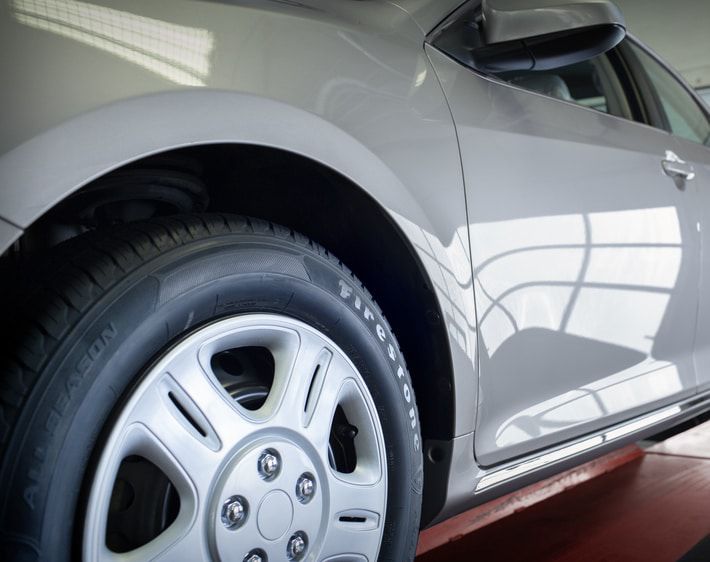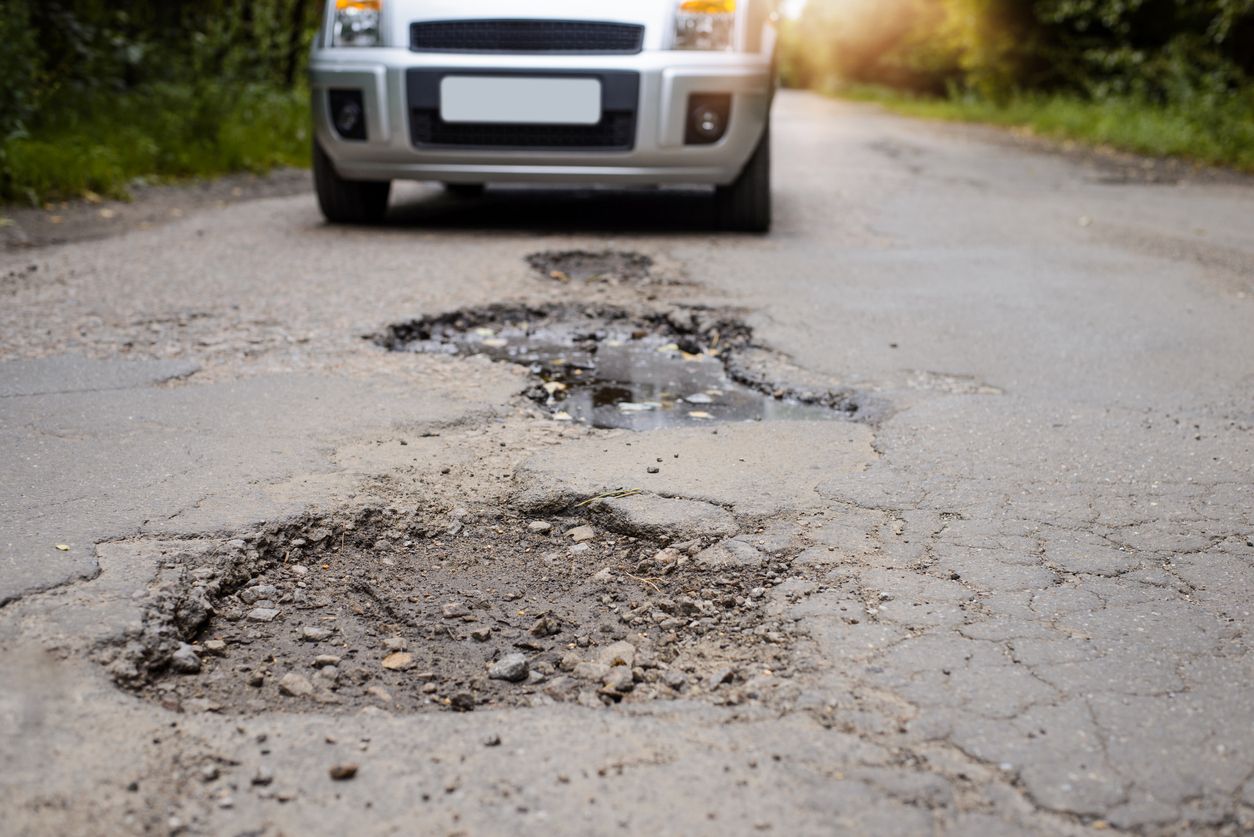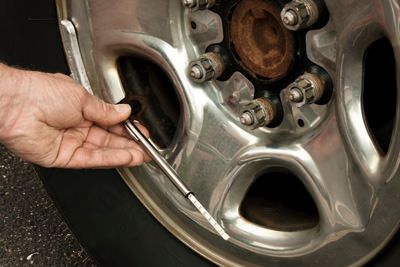"All-season," "summer," and "winter" get tossed around a lot when people discuss tires, but what do these terms actually mean to you as a driver? How are these types of tires different, and who needs them?
We’re here to answer your tire questions. Take a quick look at the comparison table below and learn when all-season tires, summer tires, or winter tires are most suitable for your driving style, climate, and vehicle.
Quick Look: All-Season vs. Summer vs. Winter Tires
| Features | All-Season Tires | Summer Tires | Winter Tires |
|---|---|---|---|
| Traction | Versatile traction for wet, dry, and snow-covered roads | High-performance traction on wet and dry roads, but not on snow or ice | Dependable traction in snowy, icy and wet conditions |
| Tread Features | Grooves and slits designed for solid handling in rain and light snow | Wide grooves to help resist hydroplaning | Zig zag grooves and special slits for reliable braking in snow and slush |
| Benefit | Smooth ride | Maneuverability | Comfortable ride |
| Best For | Places that experience all seasons to mild degrees | Places with long, hot summers | Places that consistently experience temperatures of 40°F or less |
| Top Picks | Firestone AS | Bridgestone Potenza RE-11 | Bridgestone Blizzak or Firestone Winterforce |
What are All-Season Tires?
Summer, spring, or fall—all-season tires are designed to help you brave the road year-round! They're engineered to provide traction on wet, dry, and snow-covered roads. But if you live somewhere that gets pounded by ice, snow, and sleet often, you'll probably need more cold weather features than all-season tires provide.
Specially-designed grooves in all-season tires help disperse water to improve grip on wet roads. To better handle light snow, all-season tires have hundreds of tiny, relatively shallow slits within the larger tread blocks. These slits are known as sipes, and they’re meant to increase tire contact on road surfaces to improve traction in icy conditions. All-season options, like Firestone All Season tires, offer a quiet, smooth ride and confident handling. Specifically in places that experience various types of weather (although not extreme winters).
Bridgestone Weatherpeak Tires, on the other hand, is an evolutionary all-season option that features groove channel evolving sipes, snow vices, and full-depth 3D sipes. All work together to promote snow compaction, high-speed water flow, and improved grip and handling on wet, dry, and snowy roads.
What are Summer Tires?
Summer tires are made to withstand seasonal heat, meaning they’ll likely last longer than non-summer tires in hot climates. Typically designed for temperatures above 40°F, their soft rubber compound delivers track-quality performance to provide better grip and braking on wet and dry roads. In short, you don't need a racetrack to drive like a champion.
On or after rainy days, summer tire treads give drivers more behind-the-wheel control. In dry conditions, summer tires offer superb handling and cornering. Firestone Firehawk Indy 500, for example, provides exceptional handling in both situations, and their wide shoulder blocks improve cornering stability.
Note: Summer tires fall into the performance tire category. However, performance tires can come in summer, winter, and all-season designs. So, while all summer tires fall into the performance category, not all performance tires are designed for summertime.
What are Winter Tires?
Winter tires help you drive from one place to another without slipping and sliding on roads covered with ice, snow, or sleet. Three things set winter tires apart from other tires: rubber composition, tread depth and pattern, and biting edges.
1. Rubber Composition
A special rubber gives winter tires an advantage in a cold-weather climate. This rubber remains soft and flexible so that when the thermometer drops, your tires are still capable of grip and traction. By contrast, the rubber in non-winter tires tends to stiffen in cold weather, decreasing grip.
But the rubber composition that’s so helpful in the cold can cause winter tires to wear out more quickly if used in warmer months. So, it’s best to switch back to all-season or summer tires once the worst of the winter has passed. Winter tires are ideal where temperatures regularly fall to 40°F or below. Put your winter tires in storage when temperatures are consistently above 40°F.
2. Tread Depth and Pattern
The deeper tread depths of winter tires reduce snow accumulation and increase traction on snowy roads. Furthermore, winter tires' precision-cut tread patterns (or grooves) help prevent hydroplaning by pushing water through the tread and away from the tire. For instance, Firestone Winterforce tires have a three-dimensional tread pattern that's pinned for studs if you need extra traction.
3. Biting Edges
Deep, zig-zag grooves covering the tread of winter tires serve as “biting edges” that enable better grip on snowy or icy roads. Bridgestone’s leading winter tires, Blizzak tires, use advanced 3D ZigZagSipes tread designs to provide enhanced grip, flex, and bite for maximum handling on snow and ice.
Keep in mind that installing only one or two winter tires on either the front or back axle could be dangerous. Since different types of tires offer different levels of traction, mounting only two winter tires could cause a traction imbalance — making you more likely to lose control. If winter tires are installed on the rear axle of a vehicle, it’s strongly recommended that they also be installed on the front axle.
It's also crucial for all of the winter tires on a vehicle to have the same speed rating. Speed ratings indicate tires' steering and stopping capabilities at different speeds. If you have tires with different speed ratings, they'll react to acceleration differently. Add a thick layer of snow and ice to the situation, and you've got yourself a serious safety hazard!
Summer Tires vs. All-Season
The primary difference between all-season and summer tires is that all-season includes threads for snowy and icy roads. This makes them more suited to warm weather and mild winter conditions. Summer tires, on the other hand, provide improved handling and traction on wet or dry roads — particularly in hot temperatures.
So, consider summer tires if you live in an area with predominantly warm seasons and very hot summers. But if your local environment experiences mild seasons — without extreme temperatures — all-season tires may be the best fit.
Winter vs. Summer Tires?
The main differences between winter and summer tires are their grooves, rubber compounds, and handling and wear resistance in different weather climates. Summer tires can last significantly longer than winter tires when it's hot outside. But winter tires have much better handling and stopping distances in cold, snowy, and icy conditions.
Winter vs. All-season Tires
People who live in mild climates may wonder, “Are snow tires better than all-season tires?” That’s a wise question to ask. After all, why spend your hard-earned cash on another set of winter tires if you never experience severe cold and snow? Here are a few factors to consider when comparing winter tires vs. all-season.
All-season tires provide optimal driving conditions for mild winter and summer. So, unless your winters include blizzards, thick snow, lots of ice, and constantly freezing temperatures, you may want to opt for all-season tires.
Winter tires provide a superior driving experience when driving over ice and lots of snow. You’ll generally get better tire flexibility with winter tires below freezing temperatures, which means better grip and handling. In addition, winter tires usually outperform all-season tires in braking distance on snowy roads, which is a significant safety factor.
Stop by Firestone Complete Auto Care for Tire Peace of Mind
If you're considering new tires for your vehicle, visit your local Firestone Complete Auto Care. Our professional technicians can help you determine the best tire type for your car. We also recommend double-checking your car's manual for specific instructions before making a decision.
Schedule an appointment for tire repair, replacement, or other services, today! Our technicians will get your wheels in tip-top shape in no time!



